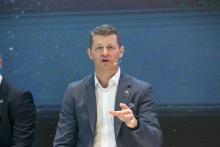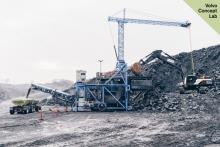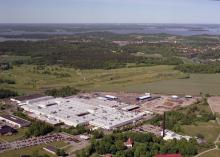Volvo CE is working with Telia and Ericsson to trial 5G technology to test remote-controlled machines and autonomous solutions at its facility in Eskilstuna, Sweden.
The company says 5G will make remote control safer by reducing the current time lag from when an automated system hands back control to a manual driver.
Melker Jernberg, president Volvo CE, says: “Automation has several levels and having 5G is an important technical support to enable us to drive development in this area. These trials in Eskilstuna will include the remote control of a conventional wheel loader but also further tests of the HX2 concept load carrier.”
Anders Olsson, CEO of Telia Sweden, says: “We can see that the industry’s interest in 5G is considerable. Automation of the entire flow will mean new ways of working and greater gains from efficiency. But to connect business-critical machines and vehicles requires a solution that is able to handle the massive amounts of data with guaranteed connection. That is what 5G can give us.”
Magnus Frodigh, head of research at Ericsson, says: “With extremely short response times, high capacity, and a high level of accessibility to the mobile network, commercial and standardised 5G technology can be used for applications such as remote control of heavy machinery in real time. This opens up new opportunities for greater efficiency, cutting costs and reducing risk in hazardous environments. 5G enables us to create a safer, more efficient and sustainable society. In cooperation with Telia and Volvo CE, we are now putting theory into practice in Eskilstuna. The 5G technology is ready for the world to switch on.”
Volvo CE, Telia and Ericsson have worked together before to deploy the latest technology to contribute to safer and more efficient mining, and in the summer of 2018, Volvo CE joined Telia's 5G partner programme. Volvo CE expects to be able to apply the lessons learned from tests at Eskilstuna to its global activities.
“We are testing locally in Eskilstuna, but we operate globally. Connected machines and autonomous solutions are the future. They can give our customers more efficient production, logistics, greater flexibility and safer work. By minimising the potential safety risks and downtime associated with sectors such as mining, we can get closer to our goal of zero emissions, zero accidents and zero unplanned stops. It will be exciting to see how far 5G can take us on that journey,” Jernberg adds.






